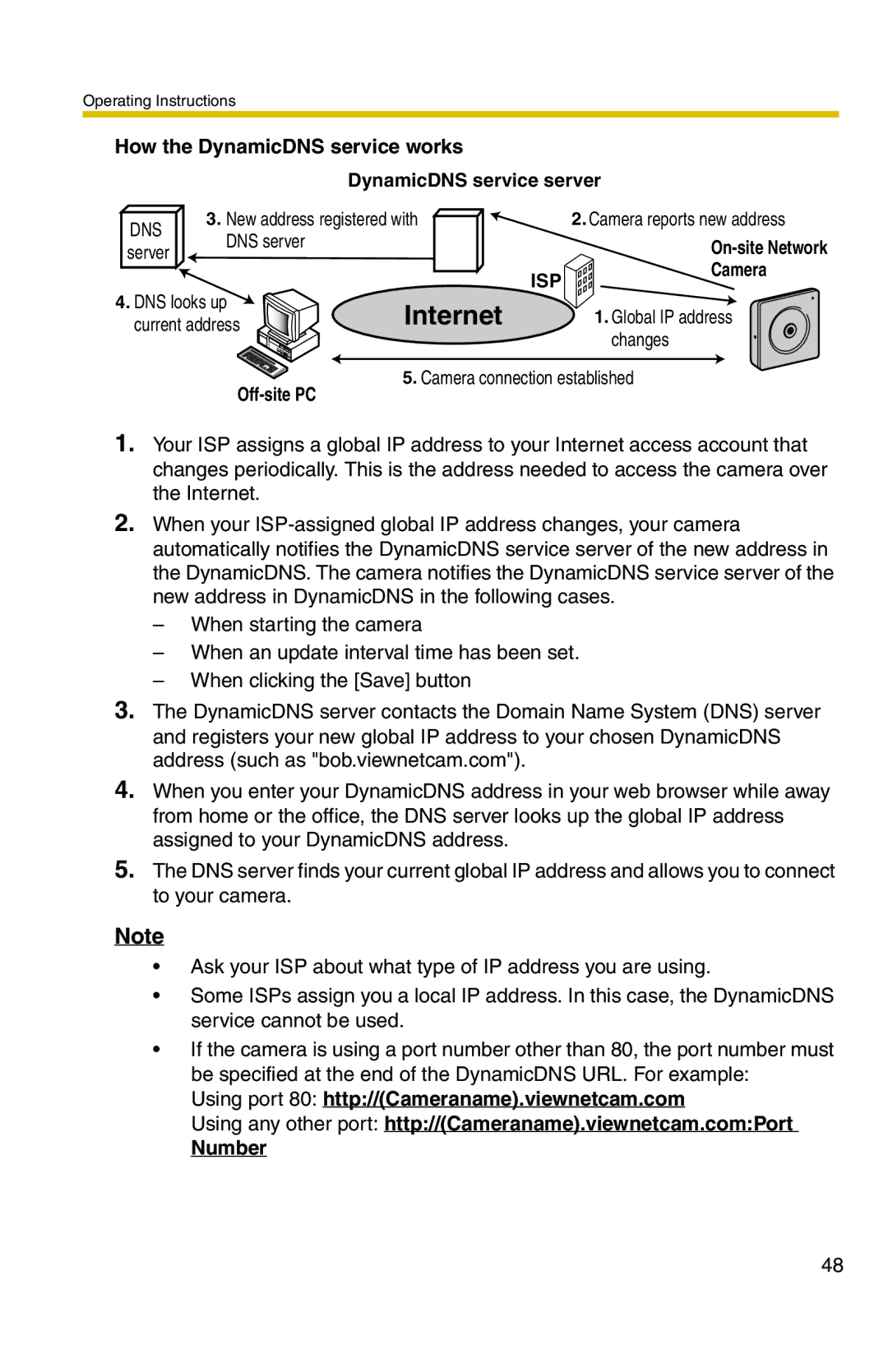
Operating Instructions
How the DynamicDNS service works
|
|
| DynamicDNS service server | ||
DNS | 3. | New address registered with |
| 2. Camera reports new address | |
| DNS server |
|
| ||
server |
|
|
| ||
|
|
|
| ||
|
|
|
| ISP | Camera |
4. DNS looks up |
|
| |||
Internet |
| 1. Global IP address | |||
current address |
| ||||
changes
5. Camera connection established
1.Your ISP assigns a global IP address to your Internet access account that changes periodically. This is the address needed to access the camera over the Internet.
2.When your
–When starting the camera
–When an update interval time has been set.
–When clicking the [Save] button
3.The DynamicDNS server contacts the Domain Name System (DNS) server and registers your new global IP address to your chosen DynamicDNS address (such as "bob.viewnetcam.com").
4.When you enter your DynamicDNS address in your web browser while away from home or the office, the DNS server looks up the global IP address assigned to your DynamicDNS address.
5.The DNS server finds your current global IP address and allows you to connect to your camera.
Note
•Ask your ISP about what type of IP address you are using.
•Some ISPs assign you a local IP address. In this case, the DynamicDNS service cannot be used.
•If the camera is using a port number other than 80, the port number must be specified at the end of the DynamicDNS URL. For example:
Using port 80: http://(Cameraname).viewnetcam.com
Using any other port: http://(Cameraname).viewnetcam.com:Port
Number
48
